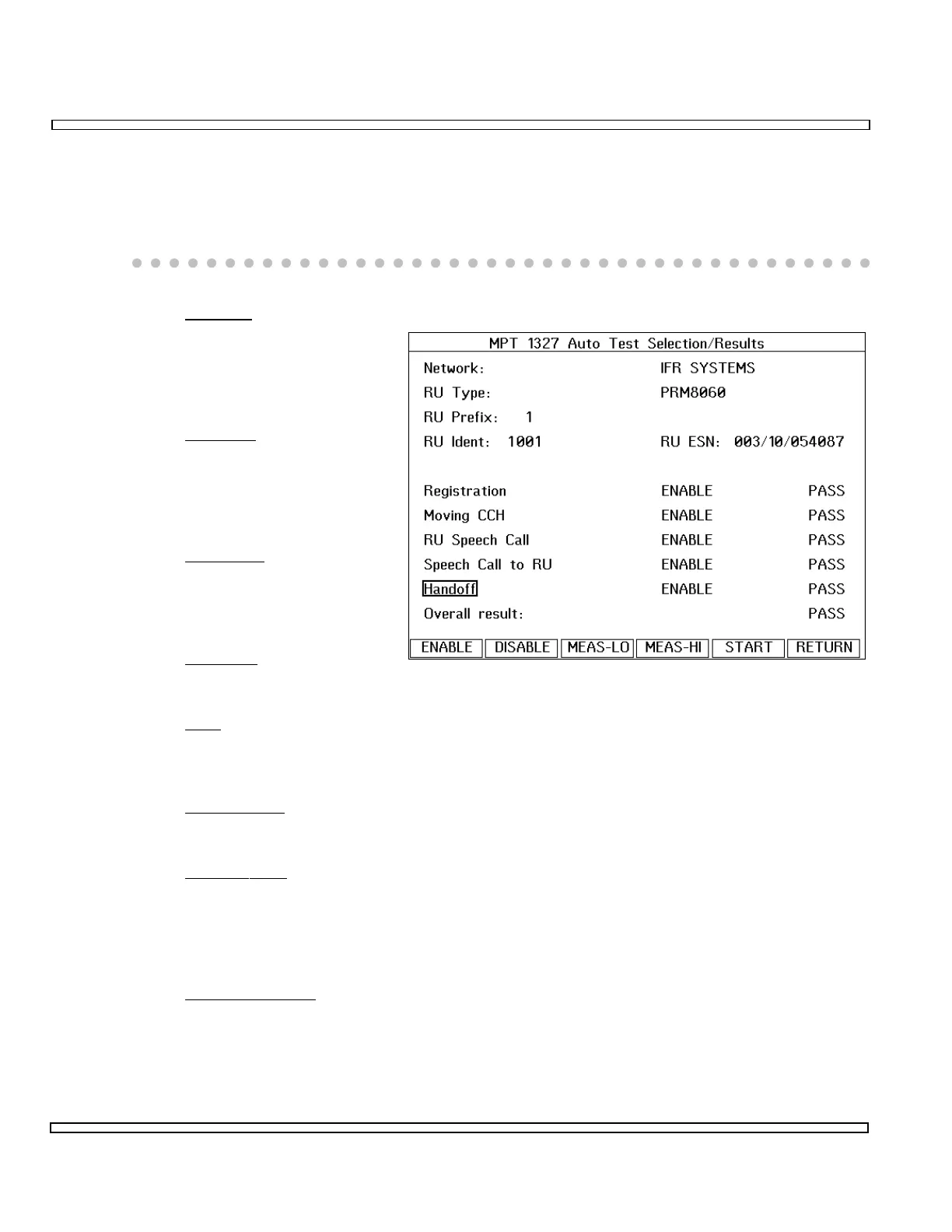6-108
SECTION 6
OPTIONS
6-15-10 AUTOMATIC TEST MODE, TEST SELECTION
An automatic test facility that subjects a Radio Unit to a series of predefined tests.
The test selection screen allows the user to decide which protocol tests are required.
1. Network
Name of the network
currently in use
(configured in the
SETUP screen).
2. RU Type
Name of the Radio Unit
type (configured in the
parametrics LIMITS
screen).
3. RU Prefix
MPT 1327 prefix of the
Radio Unit under test.
Valid range is 0 to 127.
4. RU
Ident
MPT 1327 identity of the Radio Unit under test. Valid range is 0 to 8191.
5. ESN
Electronic Serial Number of the RU under test, displayed following a successful
registration test.
6. Registration
This test demands the RU to register and interrogates the ESN.
7. Moving
CCH
This test sends the Radio Unit to another control channel (defined in the network
definition). An availability check is performed to ensure the RU successfully
moved to the new channel. The RU is then moved back to the original control
channel.
8. RU Speech Call
This test attempts to set up a speech call from the Radio Unit (only possible with
direct connection to the RU under test). If unsuccessful, the COM-120C prompts
to press the RU call button to set up the call. The COM-120C prompts to clear the
call.
